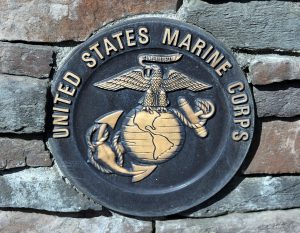 The Camp Lejeune “Elective Option” has been open for a while now and allows eligible individuals affected by contaminated water from Camp Lejeune to seek monetary compensation for their injuries. The goal of this administrative process is to make it faster and easier to receive monetary compensation and avoid going to court.
The Camp Lejeune “Elective Option” has been open for a while now and allows eligible individuals affected by contaminated water from Camp Lejeune to seek monetary compensation for their injuries. The goal of this administrative process is to make it faster and easier to receive monetary compensation and avoid going to court.
A potential problem with the Elective Option is that it’s only available to those with officially recognized medical conditions. Another issue is that it has predetermined monetary payouts for certain injuries. This means it can result in certain people receiving less compensation than if they sued in court.
However, the window for filing suit will close soon. Most individuals have until August 2024 to start the administrative claims process. Luckily, a new scientific study was released that may make it easier for those harmed by Camp Lejeune contaminated water to obtain damages for their injuries.
To better understand the significance of the new study, as well as its results, let’s first take a look at the contaminated water problem at Camp Lejeune.
Camp Lejeune Toxic Water Overview
From 1980 to 1985, water samples were collected at Camp Lejeune. These samples were taken from water supplies that visitors and residents of Camp Lejeune used to cook, drink and clean with.
The samples found various levels of industrial chemicals and solvents such as:
- Tetrachloroethylene (PCE)
- Trichloroethylene (TCE)
- Trans-1,2-dichloroethylene (DCE)
- Vinyl chloride (VC)
Some of these chemicals were found at unacceptably high levels. For example, at the Hadnot Point water treatment plant, TCE levels in 1982 were found to be at 1,400 micrograms per liter. The EPA’s maximum allowable level for TCE is 5 micrograms per liter.
Medical issues associated with these chemicals include various types of cancers, heath defects, birth abnormalities, Parkinson’s disease, and aplastic anemia.
One of the biggest challenges for those seeking compensation for exposure to the dangerous water at Camp Lejeune is proving that their medical problem was caused by the water at Camp Lejeune.
There have been various studies and research linking the chemicals found in Camp Lejeune’s water supply with the health concerns of people who lived and worked there. However, these studies were limited to certain health issues or smaller groups of individuals. As a result, the scientific evidence to support an individual’s claim that their cancer or blood disorder wasn’t as strong as it could be. It also meant that many people could have cancer caused by the contaminated water from Camp Lejeune but be unable to receive compensation.
What the New Study Found
 The study examined military personnel from the U.S. Navy and Marine Corps who were stationed at Camp Lejeune or Camp Pendleton between 1972 and 1985. Civilians who worked at either base were also examined. In total, more than 150,000 service members from Camp Lejeune and more than 160,000 service members from Camp Pendleton were subject to this study. About 6,000 civilians from each base were also included.
The study examined military personnel from the U.S. Navy and Marine Corps who were stationed at Camp Lejeune or Camp Pendleton between 1972 and 1985. Civilians who worked at either base were also examined. In total, more than 150,000 service members from Camp Lejeune and more than 160,000 service members from Camp Pendleton were subject to this study. About 6,000 civilians from each base were also included.
Specific cancer rates were then compared for individuals from each base. In case you’re wondering, Camp Pendleton was used as a base for comparison because its drinking water wasn’t known to have contamination before 1986. Also, the military and civilian populations from both bases were similar in terms of demographics, training, jobs and socioeconomic factors.
The study found that military personnel who lived or worked at Camp Lejeune had at least a 20% higher risk of developing certain cancers compared to those who lived and worked at Camp Pendleton. These cancers included:
- Acute myeloid leukemia
- All myeloid cancers including polycythemia vera
- Myelodysplastic and myeloproliferative syndromes
- Cancers of the esophagus, larynx, soft tissue and thyroid
- Polycythemia vera (alone)
- B-cell lymphoma
- Squamous cell esophageal cancer
- Certain types of lung cancer
For civilians, they had at least a 20% higher risk of developing certain cancers as well, including:
- Squamous cell lung cancer
- Female ductal breast cancer
- All myeloid cancers including polycythemia vera
Why This New Study Is So Important
This study is a big deal for several reasons. First, it compares similar military personnel from two different bases instead of military personnel from Camp Lejeune with the regular population (which consists mostly of civilians). This matters because service members tend to be healthier due in part to more frequent medical checkups. Comparing soldiers from one base with soldiers from another base offers a more accurate picture of cancer risks as it accounts for the fact that service members tend to be healthier than civilians.
Second, this study reviewed data from cancer registries from every state. This offers a more complete view of cancer rates and other medical statistics.
Third, the study gave a very detailed look at the relationship between various cancers and exposure to certain chemicals. Very few, if any, similar studies exist. This means anyone interested in learning more about cancer risks and potential causes can use this data, even if their primary concern relates to the general population and not members of the U.S. military.
 Finally, this study offers evidence that exposure to PCE, TCE and other chemicals may have caused more cancers than originally accepted or known. From a practical perspective, this means there could eventually be a larger list of cancers (like thyroid cancer and myeloproliferative syndrome) that are eligible for compensation, whether in court or through the administrative claims process (like the Elective Option).
Finally, this study offers evidence that exposure to PCE, TCE and other chemicals may have caused more cancers than originally accepted or known. From a practical perspective, this means there could eventually be a larger list of cancers (like thyroid cancer and myeloproliferative syndrome) that are eligible for compensation, whether in court or through the administrative claims process (like the Elective Option).
If you have any questions about whether you or someone you know suffered a medical problem that was the result of Camp Lejeune’s water contamination, don’t hesitate to contact my office or call me at 919.334.6277.
 North Carolina Product Liability Lawyer Blog
North Carolina Product Liability Lawyer Blog

